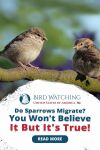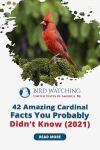
What’s This Post About?
Just when you thought hummingbirds couldn’t get any more fascinating, you get to know about their multiple flying capabilities. The opportunity to watch hummingbird flying patterns is nothing short of spectacular.
This skill is in short supply. It’s common to witness living creatures move forward and backward, but witnessing a bird fly backward is a once-in-a-lifetime experience.
Hummingbirds can fly backward. While some birds can fly backward for a limited distance and time as a defensive technique, hummingbirds are the only birds that can do so for an extended period. They can also fly upside down as well as hover being stationary.

Can Hummingbirds Fly Backward?
These birds are immensely intriguing to observe because of their incredible flight patterns and ability to shift directions in a matter of seconds.
Hummingbirds can fly straight ahead, sideways, and even backward, according to their flying patterns. This form of flying is most commonly seen when birds fly away from one plant to another.
99% of the other birds move their wings upward and downward. The fact that the hummingbirds’ wings stroke backward and forward, unlike other bird species, distinguishes its flying.
At the shoulders, the hummingbird’s wings move at an angle of around 180 degrees. As the backward and forward wing beats raise them, the ends of the wings form a figure-eight pattern.
The birds can navigate and change their flight trajectory by merely adjusting the angle of their wings.

Why Can Hummingbirds Fly Backwards?
Hummingbirds' shoulders feature a unique ball and socket joint that allows them to extend their wings 180 degrees across all directions.
Their wings are long, slender, and tapered, allowing them to glide through the air more rapidly and effortlessly. The wings’ shoulder and elbow joints are also quite near to their tiny bodies, allowing them to tilt and rotate. Hummingbirds can alter flight directions in a way that other birds cannot.
Most birds use downstrokes and upstrokes to fly, and each stride generates elevation and force. On the other hand, hummingbirds swish their wings back and forth, turning roughly 180 degrees at their shoulders to spin their wings.
They have various physiological adaptations that make them excellent fliers, and their tiny stature and wings allow for better aerial mobility.
-
Hollow bones, connected spine, and joined hip bones reduce unnecessary muscles and ligaments. This decreases the bird’s weight without surrendering support for internal organs.
-
The wings are moved by the proportionately bigger chest muscles. The chest muscles constitute more than 25percent of its overall weight, more than almost any other bird.
-
The tiny feet minimize aerodynamic resistance and contribute to having less weight overall.
-
Rapid wing beats and oxygen transport to the muscles are supported by an expanded heart which enables adequate circulation.

Now that you know why they can fly backward, the next big question is why do they need to? What is the reason for this ability?
The answer is simple.
Hummingbirds are most seen flying backward when they are moving from one flower to another. When done feeding nectar from a flower, they can retract from it by flying backward.
How Fast Can a Hummingbird Fly Backwards?
Hummingbirds beat their wings so quickly that they produce a humming sound, and that is where they got their name from.

Hummingbirds can fly backward at different rates depending on their size, but their greatest speed has been measured as roughly 54 km/h. They’ve also been seen to plunge at speeds of 79 km/h. The reason they can achieve such great speed is because of the rates at which their wings beat.
Hummingbirds, except for insects, have the greatest metabolism while in flight. This allows them to maintain consistent wing beating throughout flights and hovers.
The rates at which their wings beat also vary as per the size of the hummingbird. A Large Hummingbird has a rate of 12 beats per second.
An average Hummingbird has a rate of 3 beats per second, while the smallest hummingbirds can beat 80 times per second.
Did You Know?
When the hummingbirds dive down, their wing-flapping speeds may reach 200 strokes per second, which is incredible.
Does It Take The Same Amount Of Energy Flying Backward?
When you read about how rare and difficult it is to fly backward, it’s natural to assume that it consumes more energy. According to a study published in the Journal of Experimental Biology, it consumes no more energy than going forward.
Test: To conclude whether or not it takes a hummingbird the same energy to fly backward.
Distinguishing between these forms of flying is difficult. To determine how much energy flight is required, researchers used high-speed movies to analyze two things:
-
the birds’ posture and wing movements,
-
oxygen intake
Video 1
The video shows Anna’s hummingbird consuming sugar from a syringe whilst in an active wind tunnel.
Result: The bird had to push back to get its food when the scientists switched on the airflow, as shown in the video. It’s actually flying backward at a speed of 3m s1 in this video, which has been slowed down by a factor of 50.
Video 2
The researchers simply switched the location of the injection to have the bird fly forward. Although it appears identical to the other video, the hummingbird in the video above is fluttering forward.
To everyone’s surprise, while the direction is different, the speed remains the same.
Conclusion
Hummingbirds breathe equally as hard in both backward and forward flight, according to the researchers. In fact, the hummingbird saves more energy by flying in either direction than by lingering in still air.
Did You Know?
Even though no difference in energy consumption was observed, the hummingbirds' bodies grew considerably more erect as they flew backward. This caused them to stoop their necks much further to put their beaks into the simulated plant.
Are Hummingbirds the Only Birds That Can Fly Backwards?
The wings of a hummingbird are unlike most other birds because of their rotator cuffs.

Hummingbirds are the only birds that can properly fly backward due to their unusual wing structure. The other birds that can fly backward only manage it for a limited period when they feel vulnerable. The hummingbirds can sustain this direction for a longer time.
They do have muscles strong enough to draw the wing down but not enough to bring the wing back up, which essentially causes the air surrounding the wing to move the bird ahead.
These birds depend on the wind to lift their wings, and most of them are unable to fly backward without it. The hummingbird is the only bird that can fly backward and forwards without being reliant on the air.
When flying against heavy wind, other birds fly backward as a defensive approach that helps them acquire momentum. Other birds that can fly backward even if it is for a shorter time are:
-
Warblers
-
Flycatchers
-
Egrets
-
Herons
-
Kingfishers
Did You Know?
When flying against heavy wind, cuckoos seem to be flying backward, but they are actually traveling forward as opposed to the air. So do not be fooled!
Can Hummingbirds Fly Upside Down?
Hummingbirds can fly upside down. This is seen especially when the flowers they eat hang down. This is because their heads must be pointed up to reach the nectar. Its wings have very near joints to its tiny body, allowing them to tilt and rotate in any way.
Flying upside down is yet another spectacular trick they can do thanks to their figure-eight motion while airborne. You might just find a hummingbird flying upside down simply to display its skills, but it is mostly done when:
-
to access a downward dangling flower’s nectar
-
a technique that they use when attacked by another bird
The video shows a black-chinned hummingbird feeding from a feeder. The video shows a hummingbird flying backward as well as flying upside down.
Here you will see the bird flying upside down, trying to attain a position that allows it to obtain nectar quickly.
Did You Know?
A black-chinned female hummingbird is an aggressive species that will chase off any other birds that try to invade their feeder. They are also known to be bigger than their male counterparts.
Hummingbirds in Torpor state
Hummingbirds have been seen to hang upside-down while sleeping, which is commonly known as the Torpor condition.

The torpor state is very different from the hummingbird’s flying upside down. Hummingbirds sleep in a condition termed Torpor, which is similar to hibernation.
They can conserve a lot of their energy through this. When in torpor:
-
Their metabolism will be reduced to one-fifth (1/15) of what it usually is.
-
Their body temperature will decrease to the point where hypothermia will set in.
-
Their heart rate would gradually decrease to around 50 beats per minute.
-
Their respiration will slow down to the point that it appears that they are not breathing at all.
A hummingbird might take anywhere between 20 minutes and an hour to make a full recovery from torpor.
The first priority, once they are awake, is to eat. As soon as the hummingbirds awaken from their slumber, they will consume 25% of their total food intake.
Witness The Hummingbird Flight Yourself

Hummingbirds want to relax after their arduous flight. You can aid this by providing perches for them.
Simultaneously, offer them a consistent stream of fresh nectar in the form of hummingbird-friendly plants or clean hummingbird feeders.
This will provide them the energy they need to continue their incredible flight and you a chance to witness their extraordinary abilities.
Just making your backyard attractive for the hummingbirds should be enough to let you view their flying tricks. What you can do is plant flowers that are dangling. This increases the chances of the birds flying upside down to approach the flower.
To capture any last-minute migrants heading down from the north, it is advisable to leave your feeder up until late September.
You’ll have fun watching the hummingbirds, and you’ll be assisting them in their need to eat a lot!

Did You Know?
The hummingbirds consume food as much as half their weight. This accounts for visitation to over a thousand flowers daily.
## Keep Reading!
The thought that even the tiniest of birds can change direction in flight, dive, and even fly backward is remarkable. Bird lovers and the general public alike are fascinated by this little bird’s dexterity, speed, and durability.
These birds have a distinct wing structure and muscles that allow them to fly with a degree of control that other birds do not have.
A hummingbird can travel forward and backward, diagonal, sideways, and even hover, just like a helicopter. Read more about the hummingbird anatomy to understand their abilities better.
Hummingbird Anatomy - An Easy Guide for Bird Watchers
Hummingbirds are known for their sweet whistling sounds but their whistles alone cannot help us identify them. Read on to learn about their anatomy.

By David A. Swanson
Bird Watching USA
My name is David and I'm the the founder of Bird Watching USA! I started Bird Watching with My father-in-law many years ago, and I've become an addict to watching these beautiful creatures. I've learnt so much over about bird watching over the years that I want to share with the world everything I know about them!

David A. Swanson
Bird Watching USA
My name is David and I'm the the founder of Bird Watching USA! I started Bird Watching with My father-in-law many years ago, and I've become an addict to watching these beautiful creatures. I've learnt so much over about bird watching over the years that I want to share with the world everything I know about them!









